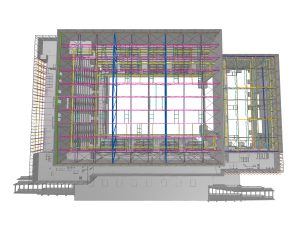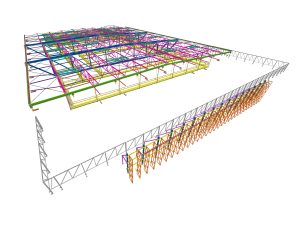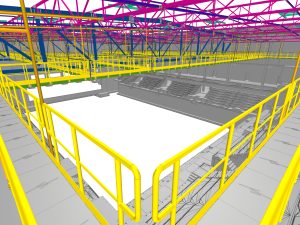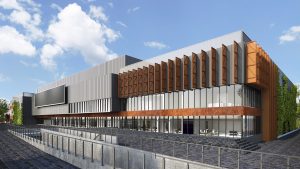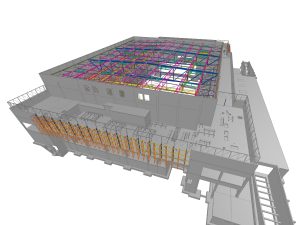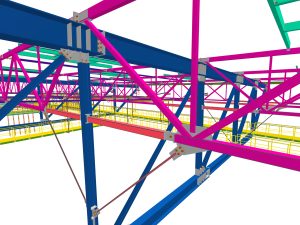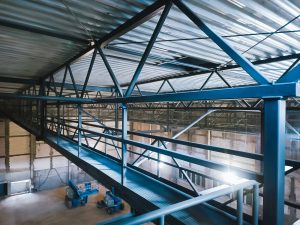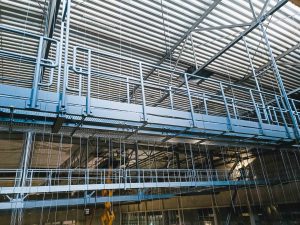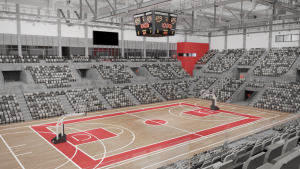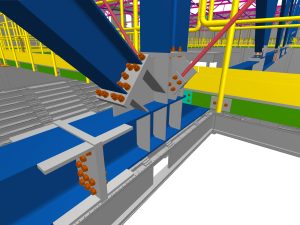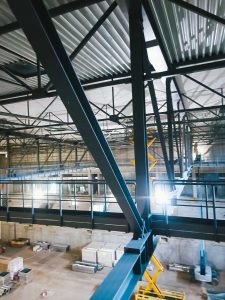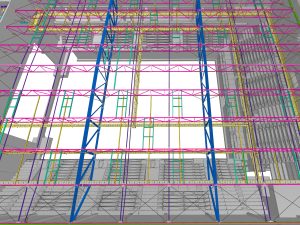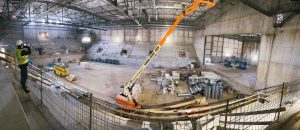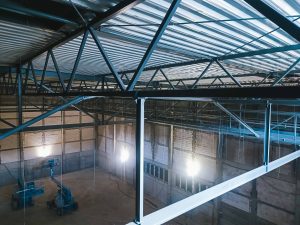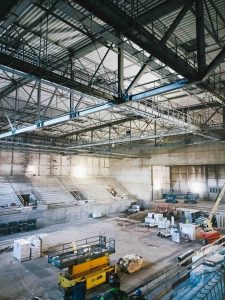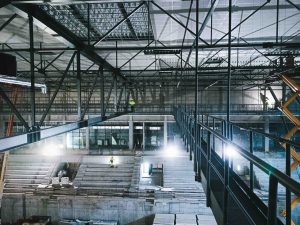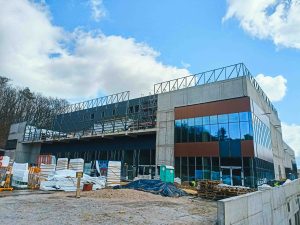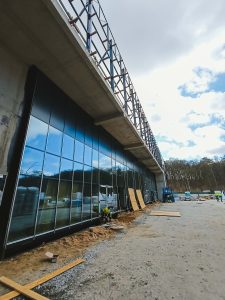 Winnaar van categorie in de landen:
Winnaar van categorie in de landen:
Hala widowiskowo-sportowa “Arena Gorzów”

| Categorie | Sport en recreatie |
|---|---|
| Jaar | 2023 |
| Land | Poland |
| Organisatie | Fort Polska Sp. z o. o. |
| Auteur | Fort Polska Sp. z o. o. |
| Cliënt | Centrum Sportowo-Rehabilitacyjne „Słowianka” |
| Plaats van constructie | Gorzów Wielkopolski |
| Tags |
Hala widowiskowo-sportowa to budynek wielofunkcyjny z wiodącą funkcją– widowiskowo-sportową. Obiekt będzie pełnił również funkcję wystawienniczą, ekspozycyjno-targową, widowiskową, pozwalającą na organizację imprez artystyczno-estradowych i społeczno-politycznych.
Maksymalna liczba widzów na trybunach w sali głównej wyniesie ok. 5069 miejsca, w tym ok. 26 miejsc dla osób niepełnosprawnych poruszających się na wózkach inwalidzkich. Ponadto zaprojektowano salę treningową na której zaplanowano trybunę na ok. 121 miejsc. Łączna ilość miejsc na trybunach w hali sportowo-widowiskowej wynosi ok. 5210.
Arena Gorzów spełnia standardy federacji sportowych do organizacji imprez sportowych na poziomie międzynarodowym m.in. w zakresie koszykówki, piłki ręcznej, piłki siatkowej, futsalu.
Budynek jest wykonany w technologii żelbetowej ze stalowym dachem nad płytą boiska głównego i treningowego.
Do konstrukcji dachu podwieszono stalowe pomosty techniczne.
Ze względu na duże rozpiętości konstrukcji zaprojektowano przykrycie dachowe na płatwiach i dźwigarach kratowych. Kratownice stalowe, spawane wykonane z profili HEA, HEB oraz rur prostokątnych. Ze względu na znaczne rozpiętości dźwigary i płatwie posiadają styki montażowe, w których elementy wysyłkowe są łączone za pomocą śrub. W poziomie pasów górnych i dolnych zaprojektowano stężenia, które przenosić będą siły poziome od działania wiatru, oraz stabilizować konstrukcję podczas montażu. Płatwie kratowe opierają się na dźwigarach, markach stalowych, zatopionych w ścianach żelbetowych oraz na stalowych belkach krawędziowych opartych na słupach.
Dźwigary kratowe zostały oparte, za pomocą marek na słupach żelbetowych, połączone są z nimi za pomocą kotew (wystawionych ze słupów lub wklejanych). Do spodu marek stalowych przyspawane zostały krótkie elementy stalowe wykonane z dwuteowników, ich celem jest przeniesienie sił poziomych na konstrukcję żelbetową.
W projekcie dachu uwzględniona została także możliwość podwieszenia wciągarek.
Łączna masa stali profilowej wykorzystana na cały obiekt to prawie 300 ton.
The sports and entertainment hall is a multifunctional building with a leading entertainment and sports function. The facility will also serve as an exhibition, exhibition and fair, and show venue, allowing for the organization of artistic, stage and socio-political events.
The maximum number of spectators in the stands in the main hall will be approx. 5,069 seats, including approx. 26 seats for the disabled in wheelchairs. In addition, a training room was designed with a stand for approx. 121 seats. The total number of seats in the stands in the sports and entertainment hall is approx. 5,210.
Arena Gorzów meets the standards of sports federations for organizing sports events at the international level, e.g. basketball, handball, volleyball and futsal.
The building is made of reinforced concrete technology with a steel roof over the main and training pitches.
Steel technical platforms were suspended from the roof structure.
Due to the large spans of the structure, the roof covering was designed on purlins and lattice girders. Welded steel trusses made of HEA, HEB profiles and rectangular pipes. Due to the large spans, the girders and purlins have assembly joints where the shipping elements are connected with bolts. At the level of the upper and lower chords, braces have been designed that will transfer horizontal forces from the wind and stabilize the structure during assembly. Lattice purlins are based on girders, steel beams embedded in reinforced concrete walls, and on steel edge beams based on columns.
The lattice girders are based on reinforced concrete columns with anchors, and are connected to them with anchors (exposed from the columns or glued in). Short steel elements made of I-beams were welded to the bottom of the steel frames, their purpose is to transfer horizontal forces to the reinforced concrete structure.
The roof design also includes the possibility of suspending winches.
The total weight of profile steel used for the entire facility is almost 300 tons.
